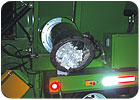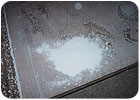
Back in January 2002, there appeared in this column a two-part article entitled “Drywall Déjà Vu.” The first part talked about the impact of waste gypsum board; fully 1 percent of the entire solid waste stream and the problems encountered when gypsum is dumped in landfills. The second part discussed the first company to successfully recycle waste gypsum board from both the manufacturing (mill waste) and installation (on-site virgin gypsum board) processes.
It was from the Canadian province of British Columbia’s ban on gypsum waste in landfills and their subsequent ban on ocean dumping that gave Tony McCauley the incentive to perfect his gypsum recycling technology and in the process, invent an entirely new industry: gypsum recycling. His company New West Gypsum Recycling concentrated on the Pacific Northwest market. But now, a Denmark-based company, Gypsum Recycling International, is ready to introduce gypsum recycling technology to the entire United States market through their U.S. subsidiary Gypsum Recycling America.
GRI has its origins as the largest demolition company in all of Scandinavia with plus 20 years experience handling and recycling construction and demolition waste materials having processed over one million tons annually in Denmark, Sweden, Holland and Great Britain.
After five years of development, GRI introduced its Gypsum Recycling Technology in 2001. The multi-billion Euro investment in this unique gypsum recycling technology is paying big dividends-both financially and environmentally.
In Denmark, only two trucks are needed to service 500 nationwide collection points where GRI provides specialized containers for the “waste owners” to tip their loads. Such waste owners are realizing over 25 percent savings by discarding their gypsum waste in this manner (75 percent use these special-dedicated waste containers). Though discarding gypsum waste in landfills is not banned in Denmark, economic and environmental factors have made recycling the popular choice. In conjunction with Denmark’s two gypsum board manufacturers: Danogips (Knauf) and Gyproc (BPB), Denmark has achieved the highest gypsum recycling rate in the world: 65 percent.

MOTUS OPERANDI
Gypsum board is the primary wall covering in the United States, Europe and Japan accounting for about 85 percent of the 80 million tons of gypsum board produced annually. Of this phenomenal annual production, over 15 million tons is disposed of as solid waste in landfills worldwide. That translates into about 40,000 tons-per-day. As discussed in “Drywall Déjà Vu,” landfill gypsum board contributes greatly to the problem of Hydrogen Sulfide (H2S) gas emissions into the atmosphere when board is not properly disposed of. In the low oxygen (anaerobic) environment of a landfill, waste gypsum (Calcium Sulfate) combines with rainwater leaching through the fill and organic waste in close proximity to the gypsum thus producing H2S gas.In the U.S., several states are currently considering full and/or partial bans on the dumping of waste gypsum in landfills. As it is, landfill space is running out worldwide, providing further incentives for recycling. In Europe, the European Union has issued two fairly recent “directives” to member states having had important and far-reaching consequences. The net effect has been an increased cost to landfill gypsum waste while, at the same time, decreasing the cost of recycling. No longer can gypsum be disposed of in “simple” or “inert” landfills. Rather, it must be disposed of in “controlled” landfills pursuant to these directives.
DIRECTIVE 31 In 1999, EU Directive No. 31 was issued requiring all member states to upgrade their landfills by the year 2009. This directive gives landfills (privately or publicly owned) a 10-year period to comply. Since its imposition, many landfills have ceased operations and, by 2009, plus 40 percent of existing EU landfills are expected to close. After 2009, waste owners must pay for their waste disposal; at increased cost due to the directive, as well as pay a type of surcharge in consideration of the final closure of the landfill. All cost subsidies for landfills in the EU will come to an end in 2010.
The landfills included under Directive 31 are categorized into three types:
- Type 1: A basic “hole-in-the-ground” whereby no interaction with other substances occurs.
- Type 2: Includes prevention of air pollution, membrane systems, leachate control systems and separate cells for various kinds of waste. Typical waste includes household waste and non-dangerous industrial waste. This type of landfill is exponentially more expensive than Type 1.
- Type 3: For waste considered hazardous and/or dangerous. Upgrading existing landfills to this level will cost significant amounts of money.

DIRECTIVE 33
Imposed on EU member states in 2002, it takes Directive 31 one-step further having given member states only three years to comply. By July 2005, all EU member states had to be in compliance with Directive 33.At the heart of Directive 33 are “Acceptance Criteria.” Such criteria helps to define which type of waste should be brought to one of the three types of landfills defined by Directive 31. It also defines the required treatment before being sent to a particular type of landfill. Prior to Directive 33, many member states sent “mixed loads” to landfills; Directive 33 ended this practice. At a minimum, sorting is considered a waste treatment. Before Directive 31, gypsum waste was sent to landfill Type 1 exclusively. Categorized as “non-inert” and “non-dangerous,” gypsum waste must now go to landfill Type 2 having separate cells whereby it cannot combine with organic waste matter.
Next month, we’ll conclude with a look at how the technology works, why it makes sense and GRI’s plans for the U.S. market.



Report Abusive Comment